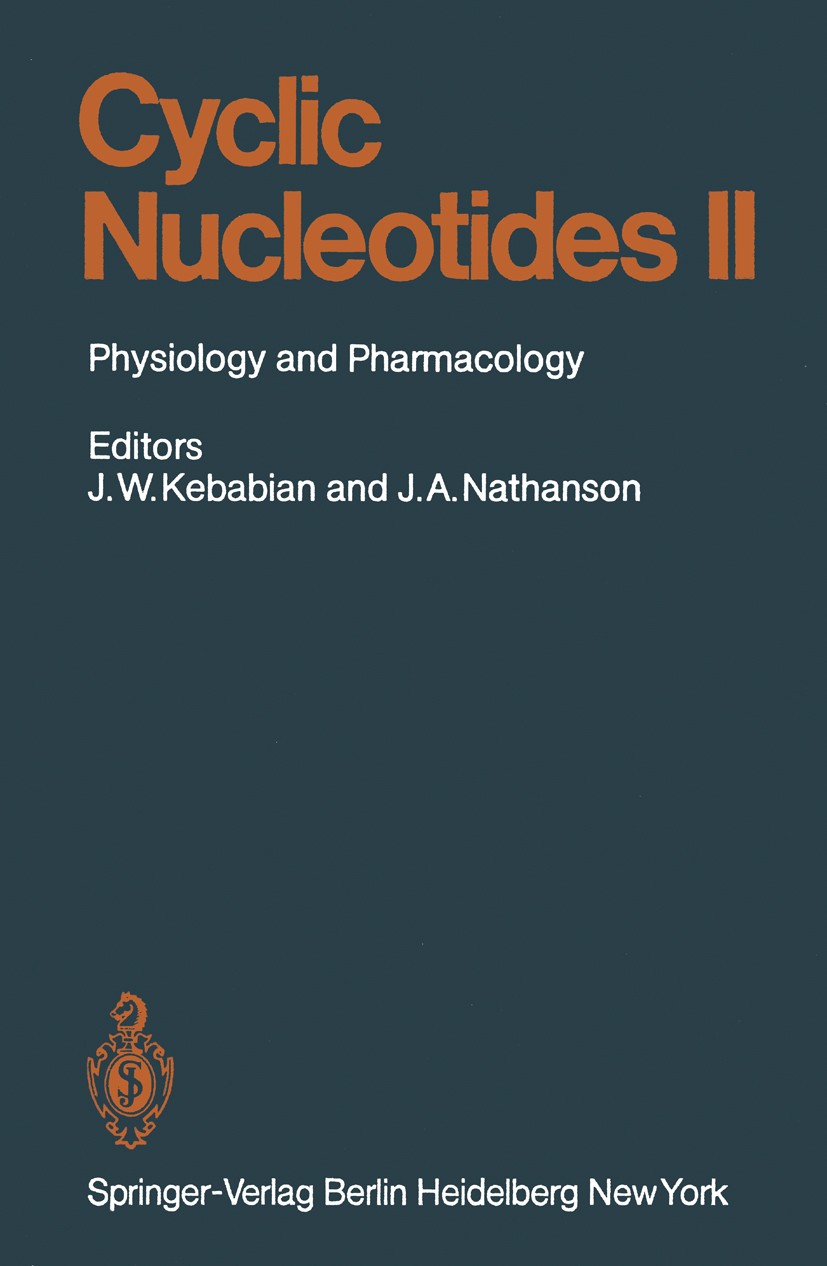| 书目名称 | Cyclic Nucleotides |
| 副标题 | Part II: Physiology |
| 编辑 | John W. Kebabian,James A. Nathanson |
| 视频video | http://file.papertrans.cn/242/241987/241987.mp4 |
| 丛书名称 | Handbook of Experimental Pharmacology |
| 图书封面 |  |
| 描述 | Cyclic nucleotides are intimately involved in the consequences of either stimulation or blockade of receptors; therefore, an understanding of the biochemistry of cyclic nucleotides ought to be important for pharmacologists. Pharmacology is a science that among other things investigates chemical compounds that affect the physiology of cells, tissues and organs. Frequently pharmacologists account for the effect of low concentrations of a drug upon a tissue by invoking the presence of a receptor upon the surface of the cell. Traditional pharmacologists excelled at identifying and classifying the properties of receptors. A. J. CLARK‘S monograph in the earlier series of the Handbook of Experimental Pharmacology (CLARK 1937) summarized the mathematics underlying the traditional pharmacological approach towards receptors. By its nature, however, classic pharmacology provided little useful information about the intracellular events occurring as a consequence of occupying a receptor; for example, ALQUIST (1948) identified the beta-adrenocep tor, but he did not provide any insight into how stimulation of the receptor produces tissue-specific physiological responses. The discovery of cyclic |
| 出版日期 | Book 1982 |
| 关键词 | biochemistry; chemistry; drug; pharmacology; physiology |
| 版次 | 1 |
| doi | https://doi.org/10.1007/978-3-642-68393-0 |
| isbn_softcover | 978-3-642-68395-4 |
| isbn_ebook | 978-3-642-68393-0Series ISSN 0171-2004 Series E-ISSN 1865-0325 |
| issn_series | 0171-2004 |
| copyright | Springer-Verlag Berlin Heidelberg 1982 |
 |Archiver|手机版|小黑屋|
派博传思国际
( 京公网安备110108008328)
GMT+8, 2025-11-11 14:07
|Archiver|手机版|小黑屋|
派博传思国际
( 京公网安备110108008328)
GMT+8, 2025-11-11 14:07


